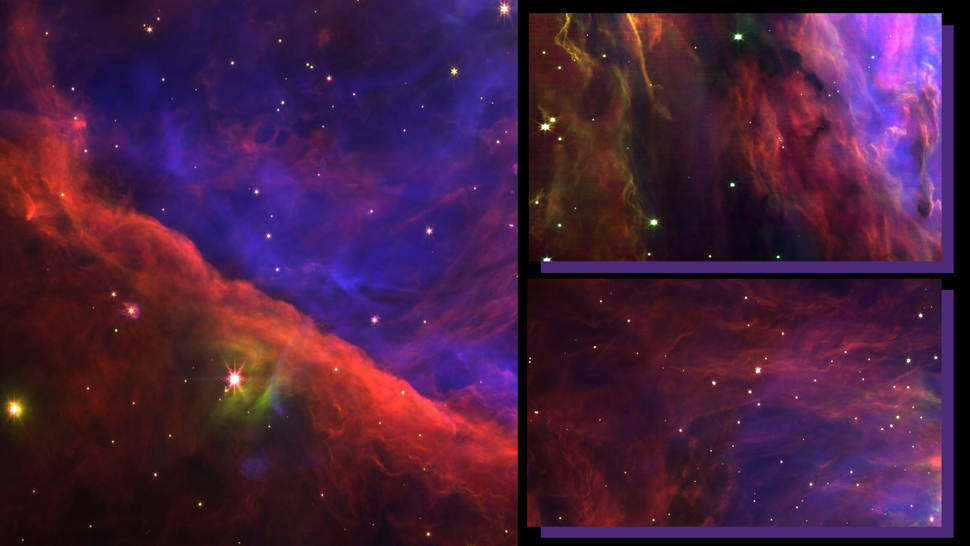James Webb Space Telescope sees Orion Nebula in a stunning new light (images) [View all]
By Robert Lea published 11 hours ago
"These images have such incredible detail that we will be scrutinizing them for many years to come."

Three images of regions of the Orion Nebula captured by the JWST showing the familar star forming region in a vibrant new light (Image credit: NASA/ESA/CSA, E. Dartois, E. Habart, PDRs4All ERS team)
The Orion Nebula may be a familiar and well-studied celestial object, but new images from the James Webb Space Telescope (JWST) show this star-forming cloud of gas and dust in an incredibly new and vibrant light.
The Orion Nebula, also known as "Messier 42" (M42), is located around 1,500 light years from Earth toward the constellation of Orion. This makes it the closest large star-forming and stellar nursery to our solar system.
Visible to the naked eye under dark skies, the Orion Nebula has been studied throughout human history, but the JWST images show it in unprecedented detail. In particular, the powerful space telescope zoomed in on the diagonal, ridge-like feature of gas and dust at the lower left quadrant of M42 called "the Orion Bar."
The images collected as part of the JWST's PDRs4All program are valuable for more than their stunning beauty. This treasure trove of data will allow scientists to delve into the often messy and chaotic conditions that accompany star formation.
"These images have such incredible detail that we will be scrutinizing them for many years to come. The data are incredible and will serve as benchmarks for astrophysics research for decades to come," Western University astrophysicist and PDRs4All principle investigator Els Peeters said in a statement. "So far, we have explored only a tiny fraction of the data, and this has already resulted in several surprising and major discoveries."
More:
https://www.space.com/james-webb-space-telescope-orion-nebula-m42-new-light
